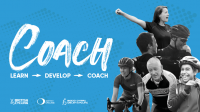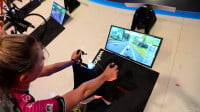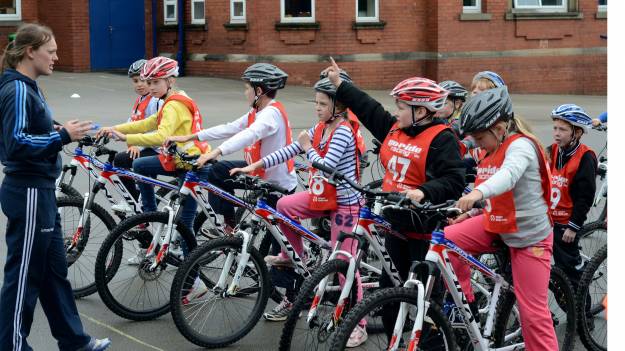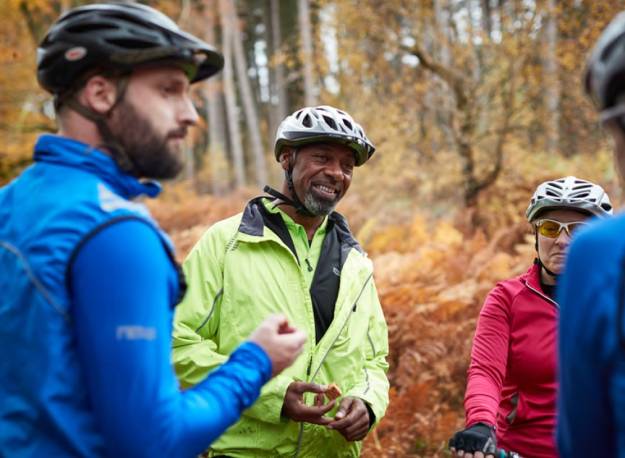Paul is an Olympic Podium Coach for the Great Britain Cycling Team; following a glittering career as a road and track rider.
Upon retiring Paul took a natural step into coaching – and has worked with some of the country’s best riders ever since.
We spoke to Paul about his time in Rio, helping the riders to prepare and the importance of having time off to reflect.
What’s it like for the riders post-Olympics?
After the Olympics we like to give the podium riders space and spend time gathering information about the future. Our programmes do need to be fairly flexible in planning but it is currently a time to sit back, take stock and review how things have gone with the support staff.
After Rio you cannot keep that level of intensity up, so I am now mentally switching back into it having had some time away.
It’s been a very intense year with a home world championships and the Olympics - and we are racing again very soon, which will be a great opportunity for the Academy riders to step up. It means we can see how they are getting on and let the podium riders shape themselves and move forward.
How do you help riders prepare for big events such as the Olympics?
When I started working with the women’s team pursuit riders again at the end of 2014, it was about refreshing a plan, thinking about where we wanted to focus and what we wanted to achieve 18 months later.
With the final two months before the Olympics being really key, it’s not a time to make any changes. Instead, those 18 months were all about breaking down the plan and having time to consider, time to learn and time to rejig training.

You work on the riders’ understanding, their nutrition, their psychology and equipment, where the wider target is broken down into areas that the support staff could do their bit on ahead of putting it back together again. That means you’re managing and planning in a really positive way, rather than trying to make the plan fit.
Eventually it did come together beautifully though and the team rode fantastically. It’s nice to be able to reflect and think about why we were so successful, what we could do better and why we didn’t quite reach where we aspired to be. It wasn’t perfect by any means, but we will try and do it all again in Tokyo.
What were the essential things you put into your suitcase for Rio?
There were your day-to-day items such as stopwatches, track information, laptop, Olympic kit, book with the last two years’ of track information written down: the things that I can refer to but are all kind of in your head and in your heart and on your computer – and mainly just the everyday things I would take to the track centre in Manchester.

The only additional thing beyond the fundamentals was a letter for every day I was away from my girlfriend, which was really good and makes you feel you have that support whilst away. That was fundamental for me due to there being so many ups and downs and it did keep me calmer.
Were you expecting the team to be so successful?
From the outside it probably looked like it was just a matter of turning up, but it didn’t feel like that. The beauty of a team event is getting four individuals in sync on a given day – or even two separate days for the women’s team pursuit. So it was about consistency, trust and the knowledge that the riders weren’t overstretching themselves.
How do you coach someone like Laura Kenny, who is competing in several events, breaking world records and already had a gold medal ahead of the omnium?
Laura had something similar in London and there was a clear day with no competing between the two events, so there is a natural window to switch off from one and get some downtime before the other. We’ve had it before around heavy training and competition where she has been challenged like that, so it’s a bit like the 18 month plan with the team. We didn’t just turn up and deal with it; we foresaw the challenge and approached this as part of her preparation. It’s just looking at the schedule as far out as you can and trying to answer some of those questions for yourself, as well as speaking with the athletes on what their best approach may be.

Obviously at podium level the athletes are the main driver of this, so it’s the consultation process and how we solve that challenge with rider and staff which I enjoy. If they own the plan then they believe in the plan so that’s what we tried to do with Laura. She actually changed part of the plan to prioritise rest, but the plan is always there to change so it’s not fixed and none of what is written is written in stone. It’s just an idea and we manage that part when we get there.
How much do you feel training represents what happens on the day?
The training reflects the racing, but the number of races at a world level can be limited. In a four year cycle you can count up how many opportunities an individual might have in a world class team pursuit such as a world cup – and there aren’t all that many. Training sessions or sections of training have to put pressure on and we just have to balance the pressurised nature of the track and the ability to put a clock on it and critique it – which is pressured in itself.
In regards to the omnium, how much is this about discussing tactics off the track?
They have just changed the omnium format again to four events in one day, so it’s a no time trial event and just becomes bunch races. Changing it again, we just have to think on our feet about what is the new challenge and try and focus our preparation on selection and our athletes excelling in that arena.
Laura thinks about what she needs to do to be better, including what her opposition might do. A lot of time is invested in conversation and learning but also in opportunities to race: not always in an omnium, but also the component parts. So that was something we did quite a lot before Rio, when we went to Poland and raced. She crashed in one event so it didn’t all go great and there were challenges, but it was about the head space, tactics and confidence. It’s trying not to leave anything out for the athletes so they can prepare as best they can.

How do you get your own – and the riders’ heads back into racing again after a big event such as the Olympics?
In my own reflections and experience of the period after Olympics, you deny yourself training and bike riding for a period of time. You then inherently get itchy feet and find yourself going back out on the bike again, then a period of getting back into structure. Some riders will stop training altogether and others will find themselves carrying on as they want to keep ticking over.
The Euros and Glasgow world cup are approaching where members of the team will race, but it won’t be the same line up from Rio. It’s about growing the squad again for the future and getting new blood in at all levels, including Academy riders moving through and graduating from Academy to Podium. By the time the Rio riders come back there will be some more people to train and race with. There is a nice natural order to that.

How do you keep yourself up to date with your coaching?
I’m lucky to be embarking on some professional development through UK Sport’s elite coach programme. I was selected before Rio and will start this soon, with a bit of head space to do it. The programme involves coaches across different sports that are Olympic, non-Olympic and Paralympic working together in fairly small groups to share thoughts and ideas.
I think British sport is connected now more than ever with coaching networks. It wasn’t done a lot before Rio because you batten down the hatches and work with what you have got because you are away so much and just focus on delivering your programme with your staff.

We have a meeting in November with an endurance coaches group that we are part of, which again will be different sports such as swimming and athletics, so it’s a chance to discuss approaches, planning, thoughts and coaching. It is interesting to hear about business practices around working in teams and with individuals – and also around target setting.
So there are a few initiatives going on including the UK Sport conference in late November and I think it’s also about disseminating information back to the coaching hierarchy within British Cycling and encouraging junior coaches, academy coaches and podium coaches to mix when we can.
It must be an exciting time for track cycling, with the new talent that is coming through the academy plus the amount of people getting involved in cycling?
It is more exciting than ever! It’s incredible how it ramps up every time we come back from an Olympics in which we have done well – and you got a real sense from the partnership announcement last week with HSBC that there is more interest. It has been a very slow burner with us being successful in the sport but the external awareness, the politics, the health, the transport agenda all seem to be getting bigger and bigger so there is that uplift alongside the sheer weight of interest in the sport.
We have relatively small numbers at the top end and though it feels bigger, we haven’t had a massive influx of numbers every year at national squad level. It is slowly changing though, with positive performances and experiences around cycling reinforcing people to stay in the sport, as well as encouraging people to try it in the first place.

We have the women’s academy based here with numbers of eight or nine to match the men’s, so that’s a really positive story – and initiatives like Breeze increase the mass participation numbers. Whether or not we get another Joanna Rowsell Shand, Katie Archibald or Elinor Barker is down to the individual’s talent and applications.
We’re here to allow people to develop to their best and hopefully at some stage enjoy a successful career in the sport. We’d recommend that riders out there join a club and show everyone what they have got, through racing and their performances. They don’t need anything more than to enjoy it and get stuck in when they are young and it will get noticed at some stage.
Will the new riders see any changes to the Academy format due to the recent success?
The omnium is a good example because we’re going to have to think about it differently. The Madison is also being integrated into programmes so it might mean the events in Tokyo will be different – we don’t quite know yet. Being open minded to that is the agenda, and to be more inclusive by rotating the racing opportunities as well as still looking at people who can be selected and excel at the world championships.
For Tokyo we will be trying to work out how to break down the world record and try to go even quicker. Maybe our review will provide more information and we can refresh the programme and expect more from it. No wholesale changes will be made as we know the basic plans worked but like anything we may be able to improve.

Do you have any tips for coaches?
At my level you just want to get the work done and do sometimes worry about taking the fun out of it, so I think it’s just trying to find that balance and making sure your sessions are clearly aimed and identified as well as maintaining the focus. Over time there will be enjoyment, but it can be tricky at a certain times when you know it will be a tough session.
But those sessions add up to achieving something and it’s all about remembering the direction you are trying to head in. That is something I need to remind myself of a lot in regards to why I’m here and just remembering where your target drives you.










